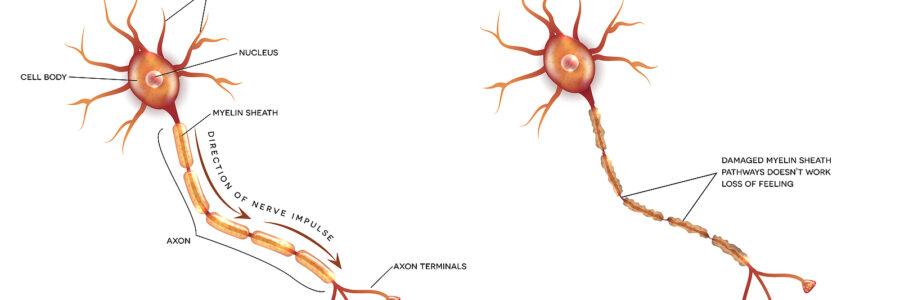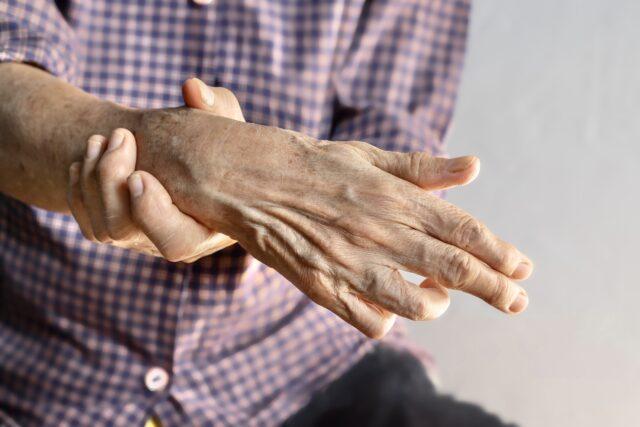 Understanding Massage and Its Impact on Nerve Damage:
Understanding Massage and Its Impact on Nerve Damage:
Massage therapy has long been revered for its myriad benefits, from relieving muscle tension to promoting relaxation and enhancing overall well-being. One area of particular interest is its potential impact on nerve damage. While the benefits of massage for muscle-related issues are well-documented, its effects on nerve damage require a more nuanced understanding. In this comprehensive guide, we’ll delve into the relationship between massage and nerve damage, exploring how different massage techniques can aid in nerve repair and provide relief from nerve pain.
Understanding Nerve Damage
Nerve damage, or neuropathy, can occur due to various reasons, including physical trauma, medical conditions like diabetes, infections, and exposure to toxins. Symptoms of nerve damage can range from mild tingling and numbness to severe pain and muscle weakness. Depending on the severity and cause, nerve damage can significantly impact a person’s quality of life.
How Massage Therapy Works
Massage therapy involves the manipulation of soft tissues, including muscles, tendons, and ligaments, to promote relaxation, reduce pain, and enhance overall body function. The primary mechanisms through which massage therapy exerts its effects include:
Improved Circulation: Massage enhances blood flow to the targeted areas, which can promote healing by delivering essential nutrients and oxygen to damaged tissues.
Pain Relief: Through the stimulation of sensory receptors, massage can help reduce pain by blocking pain signals to the brain.
Muscle Relaxation: By alleviating muscle tension and reducing stiffness, massage can improve mobility and decrease discomfort.
Stress Reduction: Massage promotes relaxation and reduces stress levels, which can have a positive impact on overall health and well-being.
Types of Massage Techniques
Several massage techniques can be beneficial for individuals with nerve damage. Understanding the unique characteristics of each technique can help in choosing the most appropriate therapy:
Swedish Massage: This technique involves long, gliding strokes, kneading, and circular movements. It is effective for promoting overall relaxation and improving circulation, which can be beneficial for mild nerve pain.
Deep Tissue Massage: This type focuses on deeper layers of muscle and connective tissue. It can be particularly useful for chronic pain and tension resulting from nerve damage, as it helps release deeply held tension.
Neuromuscular Therapy (NMT): Also known as trigger point therapy, NMT targets specific points of pain in the muscles, which can correspond to nerve pain. By applying pressure to these trigger points, NMT can help release tension and reduce referred pain.
Myofascial Release: This technique targets the fascia, the connective tissue surrounding muscles and nerves. By applying sustained pressure, myofascial release can help alleviate restrictions in the fascia, reducing pain and improving mobility.
Reflexology: Focusing on pressure points in the feet, hands, and ears, reflexology can stimulate nerve pathways and promote relaxation throughout the body. This can be particularly beneficial for systemic nerve conditions like peripheral neuropathy.
Massage Therapy for Specific Nerve Conditions
Different types of nerve damage may respond to massage therapy in various ways. Here are a few common conditions and how massage can help:
Carpal Tunnel Syndrome: Characterized by numbness and tingling in the hands and fingers, carpal tunnel syndrome can benefit from deep tissue massage and myofascial release to alleviate pressure on the median nerve.
Sciatica: This condition involves pain radiating along the sciatic nerve, often affecting the lower back and legs. Neuromuscular therapy and deep tissue massage can help relieve muscle tension and reduce nerve compression.
Diabetic Neuropathy: Nerve damage resulting from diabetes can cause pain and numbness in the extremities. Reflexology and gentle Swedish massage can improve circulation and provide symptomatic relief.
Post-Surgical Nerve Damage: After surgery, nerve damage can occur due to trauma or inflammation. A combination of techniques, including Swedish massage and myofascial release, can aid in the healing process and reduce scar tissue formation.
Considerations and Precautions
While massage therapy can offer significant benefits for individuals with nerve damage, it is essential to approach it with caution. Here are some important considerations:
Consultation with Healthcare Providers: Before starting massage therapy, individuals with nerve damage should consult with their healthcare providers to ensure it is safe and appropriate for their specific condition.
Qualified Massage Therapists: It is crucial to seek massage therapists who are trained and experienced in dealing with nerve-related issues. A qualified therapist can tailor the treatment to the individual’s needs and avoid exacerbating the condition.
Communication: Open communication with the massage therapist is vital. Individuals should inform their therapists about their symptoms, pain levels, and any changes in their condition to ensure the treatment is effective and safe.
Gradual Approach: Starting with gentle techniques and gradually increasing intensity can help the body adapt to the therapy and prevent any adverse reactions.
Conclusion
Massage therapy offers a promising complementary approach for managing nerve damage. By improving circulation, reducing pain, and promoting relaxation, various massage techniques can aid in the recovery process and enhance the quality of life for individuals with nerve-related conditions. However, it is essential to approach massage therapy with careful consideration and professional guidance to ensure safety and efficacy. With the right approach, massage can be a valuable tool in the journey towards nerve health and overall well-being.
For more information about how massage can benefit nerve damage contact our local massage therapy school campus.

Workplace Massage: Boosting Productivity and Employee Satisfaction
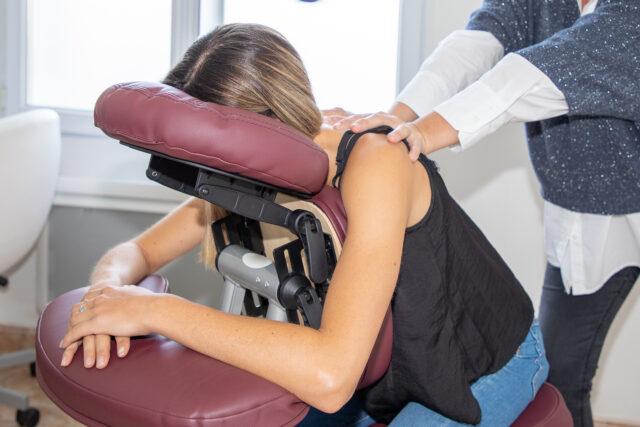 In today’s fast-paced work environments, employee well-being has become a top priority for organizations aiming to create a positive and productive workplace culture. One increasingly popular method to promote workplace wellness is through massage therapy. In this blog post, we will explore how incorporating massage into the workplace can lead to happier, healthier, and more engaged employees.
In today’s fast-paced work environments, employee well-being has become a top priority for organizations aiming to create a positive and productive workplace culture. One increasingly popular method to promote workplace wellness is through massage therapy. In this blog post, we will explore how incorporating massage into the workplace can lead to happier, healthier, and more engaged employees.
- The Impact of Workplace Stress: Workplace stress is a pervasive issue that can negatively affect employees’ mental and physical well-being. High stress levels lead to decreased productivity, increased absenteeism, and a higher risk of burnout. By offering massage as a workplace wellness program, employers can provide employees with a valuable stress management tool.
- Benefits of Workplace Massage: a. Stress Reduction: Massage helps to alleviate stress by reducing cortisol levels and promoting the release of endorphins, the body’s natural feel-good hormones. Regular massage sessions can help employees manage stress more effectively and maintain a sense of calm and balance throughout the workday. b. Pain Relief: Many employees suffer from musculoskeletal issues and chronic pain due to prolonged sitting, repetitive tasks, or poor posture. Massage therapy can target these specific areas, relieving tension, improving circulation, and reducing pain. c. Improved Focus and Mental Clarity: Massage promotes relaxation and mental clarity, which can enhance cognitive function and concentration. Employees who receive regular massages are more likely to stay focused, make better decisions, and perform at their best. d. Enhanced Mood and Morale: Massage triggers the release of serotonin and dopamine, neurotransmitters associated with happiness and positive mood. By incorporating massage into the workplace, employers can create an atmosphere of well-being, boosting employee morale and job satisfaction.
- Different Approaches to Workplace Massage: a. On-Site Chair Massage: Chair massage is a convenient and efficient option for the workplace. It involves a brief, seated massage that focuses on the neck, shoulders, back, arms, and hands. On-site chair massage sessions typically last between 10 to 30 minutes and can be scheduled during breaks or as part of wellness events. b. Wellness Rooms: Creating dedicated wellness rooms within the workplace provides employees with a quiet, comfortable space where they can receive longer massage sessions or engage in relaxation exercises. These rooms can be equipped with massage tables, relaxing music, and essential oils to enhance the overall experience. c. Wellness Programs and Subsidies: Employers can partner with local massage therapists or wellness centers to offer discounted or subsidized massage sessions for employees. By providing financial incentives or flexible schedules to accommodate massage appointments, employers demonstrate their commitment to employee well-being.
- Implementing a Workplace Massage Program: a. Management Buy-In: To successfully introduce a workplace massage program, it’s crucial to obtain support from management and stakeholders. Highlight the potential benefits, present case studies, and emphasize the positive impact on employee satisfaction, retention, and productivity. b. Partnering with Professionals: Collaborate with licensed and experienced massage therapists or wellness providers who specialize in workplace programs. Ensure they understand the unique needs of office environments and are capable of delivering quality services. c. Communication and Promotion: Proper communication is key to the success of any workplace wellness initiative. Use various channels, such as emails, newsletters, posters, and intranet platforms, to inform employees about the availability and benefits of the massage program. Highlight success stories and encourage employee feedback to create a buzz and generate interest. d. Evaluation and Feedback: Continuously evaluate the effectiveness of the program through employee surveys, feedback sessions, and productivity metrics. Adjust the program as needed based on employee preferences and needs.
Massage therapy is a powerful tool for promoting workplace wellness and improving employee satisfaction and productivity. By addressing stress, reducing pain, enhancing focus, and boosting morale, workplace massage programs have the potential to transform the work environment into a healthier, happier, and more efficient space. Employers who invest in the well-being of their employees through massage initiatives demonstrate their commitment to fostering a positive work culture. By incorporating massage into the workplace, organizations can unlock the full potential of their workforce and reap the long-term benefits of a more engaged and productive team.

Massage Therapy in Healthcare
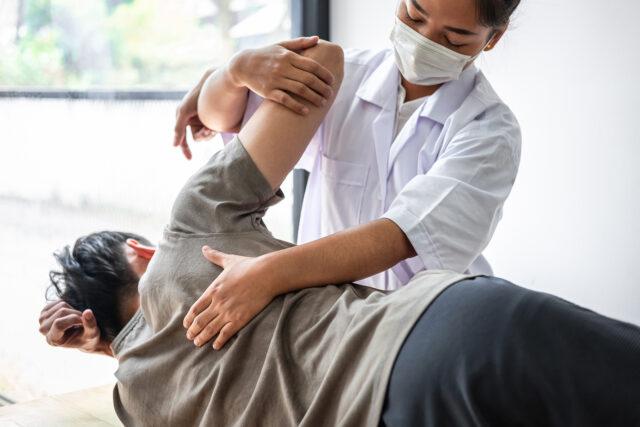 Massage Therapy: An Effective Complementary Treatment in Healthcare
Massage Therapy: An Effective Complementary Treatment in Healthcare
In recent years, the use of complementary and alternative medicine (CAM) in healthcare has increased in popularity. One such practice that has gained significant attention is massage therapy. Massage therapy is a hands-on technique that involves the manipulation of soft tissues in the body to promote relaxation, reduce stress, and alleviate pain. While once considered a luxury, massage therapy is now recognized as a viable complementary treatment in healthcare.
Massage therapy has been shown to have numerous benefits, both physical and psychological. Physically, massage therapy can help improve circulation, reduce muscle tension, and improve joint mobility. It can also aid in the healing process of injuries by increasing the flow of nutrients and oxygen to affected areas. Psychologically, massage therapy has been found to reduce anxiety, depression, and improve overall mood. It can also improve sleep quality and decrease symptoms of PTSD.
Massage therapy has been used as a complementary treatment for various health conditions, including chronic pain, fibromyalgia, arthritis, cancer-related fatigue, and more. In fact, massage therapy has been shown to be as effective as other CAM modalities, such as acupuncture and chiropractic, in treating chronic pain conditions. Additionally, massage therapy has been found to reduce the need for prescription pain medications, which can have harmful side effects.
Massage therapy is also being increasingly used in hospital settings. Studies have shown that massage therapy can help improve patient outcomes by reducing pain and anxiety levels, improving sleep quality, and reducing the length of hospital stays. In addition, massage therapy can provide healthcare professionals with a non-invasive, non-pharmacological treatment option to use in conjunction with other medical interventions.
In conclusion, massage therapy has become a valuable complementary treatment option in healthcare. Its benefits range from physical to psychological, and its use has been found to be effective in treating various health conditions. With the growing body of evidence supporting its use, massage therapy should be considered as a viable treatment option in healthcare settings. If you are experiencing any health concerns, consider talking to a healthcare professional about the benefits of massage therapy for your specific needs.
Contact us today to learn more about massage therapy and our massage program options.
Top Ten Reasons People Go Back to School
 There are a hundred and one reasons people choose to go back to school. Some of the reasons gravitate around the harsh economic conditions; others are inclined towards creating a competitive edge over rivals. Other people are motivated
There are a hundred and one reasons people choose to go back to school. Some of the reasons gravitate around the harsh economic conditions; others are inclined towards creating a competitive edge over rivals. Other people are motivated
by the desire to be better and more skilled. Below are ten reasons potential massage students and health practitioners are likely to seek more education:
#1. Increase Qualification: since most jobs require prerequisite expertise and specialized skills, practical training and acquiring more knowledge is essential. Some of these qualifications come with a college degree that gives you a better position of securing a job or promotion.
#2. Passion for learning: you may go back to school out of love for learning. Since some educational disciplines are vast and inexhaustible such as medicine and education, you may decide to expand your knowledge in a certain field in the course. When you learn new things, you get to sharpen and improve your skills.
#3. Enriching life: by deciding to go back to school, you can obtain a new hobby or perfect a skill. When you learn new things that make you happy, you feel satisfied and fulfilled. You can have fun in studying what you love and enrich your purpose in life.
#4. Chasing dreams: if your dream is to learn new things, you won’t feel offended to pursue further studies. It is by getting a quality education, which you can become a successful professional. Dreams in curing people with chronic illnesses or improve their fitness may require you to seek more knowledge.
#5. Career change: lucky individuals may decide to change their career path as time progresses, this may be due to personal or professional reasons. By going back to school, you can change your career direction geography-wise, industry-wise or satisfaction-wise by shifting the experience and skills you have already amerced with new knowledge.
#6. Adventure: one more good reason you may want to go back to school is that you can explore the globe. You may ask how? This can be by securing admission into an institution of higher education in a different country or continent. While studying, you will get to learn about world cultures, politics and religion.
#7. Promotion: it is true that getting a promotion can be a hard task. If you would like to move up on your career ladder, going back to school will create a springboard for your professional fulfillment. When you are promoted, you should be prepared to handle more responsibilities.
#8. Return to work: after you’ve been out of work for too long because of either family commitments, health issues or taking care of children, you may feel inadequate to handle the same duties. When you are ready to return to your professional life, you may need to get some additional trainingt to keep yourself up to date.
#9. Complete education: you may have dropped out of school because of financial reasons or to take care of an ailing family member. This may not mean that your opportunity has been lost, you can catch up with your studies, after all, education knows no age limit.
#10. Be a role model: going back to school is one of the ways you can set a good example for aspiring young people, friends and family. By pursuing more studies is an indicator that you are motivated to become successful.
![]()
Student Perspective Of Massage School – Week 2
Weekend Student Jo –
Her perspective and thoughts as she progresses through massage school at Northwest Academy.
 Here Chicken Chicken Chicken…..
Here Chicken Chicken Chicken…..
Learning about the tissues of the human body from a text book can get a little dry. That’s why our fabulous teacher added a little spice to our lesson today…or rather, added some chicken.
Our teacher walked into the room, asked us gather around the table, and pulled out a plate with a piece of raw chicken on it.
To give us a more vivid idea of the consistency of muscle, fascia, tendons, ligaments and bone, she walked us through the chicken-equivalent of all these tissues. It was very educational, and hysterical. If nothing else, watching her try to dissect a little piece of raw chicken with a butter knife definitely made that lesson stick. The butter knife was all she could find…
Are you interested in learning more? Contact our admissions office at: admission@nw-academy.com
![]()
Student Perspective Of Massage School
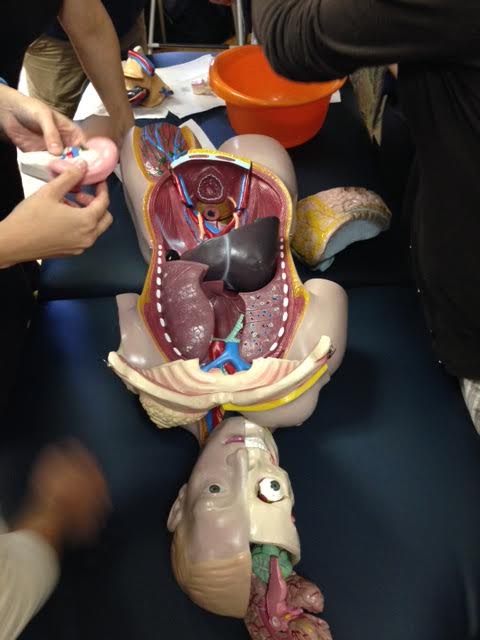 Weekend Student Jo – Her perspective and thoughts as she progresses through massage school at Northwest Academy.
Weekend Student Jo – Her perspective and thoughts as she progresses through massage school at Northwest Academy.
First Day of New Quarter –
As I walked into class today and met the new students joining us this quarter, I was reminded how nervous I was when I walked through that door the first time. Immediately, the students and teachers alike welcomed me into their class with such openness.
Within the first day, it was clear to me that the commitment of the students and teachers to creating a healthy, low stress, and supportive learning environment was unparalleled.
Now, I am so excited to be able to say that I am a part of this school. I get to be one of those people who welcomes new students into the first step of their new career on that first day. What better joy is there than to find not only your calling, but the community that you have been searching for?
![]()
10 Ways to Re-purpose Old Lotion Bottles
 Lotion bottles come in a large variety of colors, shapes and designs. What do you do with them once they are empty? After you wash them thoroughly here are ten great ways to re-purpose them.
Lotion bottles come in a large variety of colors, shapes and designs. What do you do with them once they are empty? After you wash them thoroughly here are ten great ways to re-purpose them.
Plant Pots and Make Up or Pencil Cups
Cut the Lotion bottle’s bottom off about four or five inches from the bottom end forming a cup. This can be decorated with decoupage, or painted.
This same design can be used hold make up brushes or eyeliner pencils. It would also be a great way for kids to make a pencil cup as a teacher gift
Phone Charger Holder
This personable phone charger holder enables you to hang your phone around your charger so it is not left on a floor or in an area where you are not able to leave it safely on a table.
http://www.makeit-loveit.com/2011/12/holder-for-charging-cell-phone-made-from-lotion-bottle.html
Bird feeder
Birds will really enjoy visiting your back yard or patio when you put out these cute lotion bottle bird feeders. Easy to make and decorate these bird feeders will be an eclectic addition to your home.
First remove the pump and tube from the cap on the bottle leaving a hole in the lid. Use string or thin rope to run through the hole and tie a knot under the cap creating a loop to hang over a tree limb or hook.
Second simply cut an oval shaped hole in the front of the bottle approximately two inches from the bottom as an opening for the birds to get to the seeds. Paint, fill with bird seed and hang.
Plastic Mini Purse
These mini purses are adorable and make great gifts. Every little purse will be unique and can even be used as a gift bag for smaller gifts or gift cards.
http://www.instructables.com/id/FUN-LITTLE-PURSE-recycle-crafting/
Over the Sink Sponge Caddy
By cutting the lotion bottle and bending it over your sink this craft will give you a caddy so you never have to search for your soap and sponge again.
http://eveofreduction.com/how-to-repurpose-shampoo-bottle/
Sink Extender
This is a great way to help kids who can’t quite reach the sink yet. It extends the water to where they can wash their hands comfortably.
http://lifehacker.com/repurpose-a-lotion-bottle-into-a-faucet-extender-for-ki-1532436589
Water Balloon Pump
This will work with any lotion bottles that have a pump. First be sure the lip of the balloon will fit over the end of the pump. In some pump bottles you may need to cut away part of the pump so the balloon will fit. Thoroughly wash out the bottles and fill with water. Kids can then use the bottle to fill up water balloons.
Plant Label Stakes
The plastic used to make your lotion bottles makes a perfect weatherproof stake to label the plants in your garden. Simply use a sharpie to draw out long rectangle, then cut. Once you have the stake cut out, make one end pointed by cutting into a triangle point. Use sharpie to write the name of plant and then it is ready for the garden or potted plant you would like to label.
Outdoor or Indoor Lighting Covers
Using the tops of lotion bottles as light covers you will give a new look to old holiday lights. These can be used to light up any outdoor party.
http://familycrafts.about.com/od/gardendecor/ss/Patio_Light_Cover_Craft.htm
Paint Brush Cups
After you are done painting all of your new re-purposed lotion bottles use one to soak your paint brushes in.
![]()
Massage School Points to Self Discovery
 The idea of going back to school as a mature adult can be a bit daunting; you have responsibilities that still need to be fulfilled and a life that still needs to be lived.
The idea of going back to school as a mature adult can be a bit daunting; you have responsibilities that still need to be fulfilled and a life that still needs to be lived.
But one of the nice things about going when you’re older is you know how to work for what you want. Failure isn’t an option, and since you’re not worrying about your ability to be successful, you can simply enjoy the experience, with confidence.
With an education choice like massage school, not only will you be going down a new career path, you will be embarking on journey of self-discovery.
Every massage school curriculum includes basic, core courses, and while you learn, you are also really learning about yourself.
Anatomy is the study of the human body. You will learn not only about muscles, but every single part that makes you up.
Kinesiology is the study of human movement. It is understanding how muscles and tendons and joints need to work in harmony to benefit the body.
Physiology is the study of how the body parts function and how they work in conjunction with one another.
Pathology, the study of disease, is also important. This knowledge will aid the massage therapist in deciding a course of treatment as well as knowing when it is time for other health care practitioners to assume a role in the patient’s overall care.
Nutrition, and the study of nutrients and how the body uses those nutrients, is an extremely useful and important course. So much of the things called food today really aren’t. The soil is depleted; fruits and vegetables are grown with pesticides and herbicides, and allergies and intolerances are common. Massage therapists are not nutritionists, but a basic understanding of the role nutrition plays in the body is key, for both clients and yourself.
Massage Techniques, of course, is formal instruction on exactly how to use your body effectively to help someone else’s body. It is using your fingers and hands, or even feet or elbows, to provide a therapeutic experience. You’ll also learn how to prevent injury to yourself while practicing massage.
Additionally, you’ll learn things like the history of massage, the ethical practices expected of the profession, and the basic business skills needed to be an independent massage therapist.
Good massage schools will place a high emphasis on taking proper care of yourself. Many healthcare-related professionals have a high level of burnout, but then so does any profession if you aren’t practicing mindful self-care. Take advantage of additional learning experiences that may be offered to you. Many schools provide basic introductions to other alternative therapies, like yoga, foot reflexology, or acupressure.
Learning from other students also aids in self-development. Everyone in life has something to offer. Oftentimes, like-minded individuals enjoy similar lifestyles and hobbies, like gardening or hiking, and enjoy sharing their knowledge and passions.
Choosing to start over and head down a new career path doesn’t have to be filled with anxiety. Like anything in life, viewing it as an adventure and as an investment in you will offer the best chance of success.
![]()
How to Make Good Grades in Massage School
 For many people the idea of going back to school can be extremely intimidating. School is a vastly different environment than the workforce and it takes a very different mindset. There are a variety of factors that can make the difference between a successful course of study and failure but the number one factor will always be choosing the career path that appeals the most to you. For many that answer lies with a degree or certificate in health and wellness, more specifically in massage therapy. Not only is it a booming career field but it is also a field that offers several options. So is going back to school right for you? Yes but that is just the beginning.
For many people the idea of going back to school can be extremely intimidating. School is a vastly different environment than the workforce and it takes a very different mindset. There are a variety of factors that can make the difference between a successful course of study and failure but the number one factor will always be choosing the career path that appeals the most to you. For many that answer lies with a degree or certificate in health and wellness, more specifically in massage therapy. Not only is it a booming career field but it is also a field that offers several options. So is going back to school right for you? Yes but that is just the beginning.
Deciding to go back to school is the easy part. You now have to select the school where you will eventually earn your degree or certificate. When selecting your massage school you will want to select a field of study that appeals the most to you and offers you the most options. You will also want to consider cost and financial aid. The schools should have financial aid counselors to help you but more than that they should also offer counselors to help you understand what the coursework will be so you can plan ahead. After all…you do not want to waste time and money only to fail the courses because you did not apply yourself and you received poor grades. Getting good grades is the key to success.
The process of getting good grades is basically the same regardless of the course of study. The fundamentals are always going to be: listening skills, note taking, memorization, practice and test taking. Each of these are vital in massage school if you want to make good grades. Good grades mean you will excel and learn valuable skills. Learning valuable skills leads to better paying jobs which leads to a better lifestyle for you and your family. Let’s get started on your fundamentals.
Active listening skills are probably one of the most understated and under utilized skills anyone can ever possess. It is easy to say that you can listen to someone but are you actively listening or are you simply waiting for a chance to respond or, in the case of listening to a lecture, are you waiting for the lecturer to be finished speaking so the class will be over? Active listening involves opening your ears and your mind. It is leaning in and engaging with the speaker and really hearing what he, or she, has to tell you about the subject. When you actively listen then you are naturally going to start taking good notes because you are paying attention. The most effective students start out taking too much notes and learn to whittle them down after they have taken a few tests. This way they know how much they retain from listening alone.
Massage school is more than just listening, note taking, and tests though. It also will involve hands on practice and education. That is where your family and friends come in to play. Get a study group together and recruit volunteers so you can practice the skills you have been taught in your classes. The more you practice the better you will become. Learning how to study and retain information may take time but you can master these skills, and in the course of mastering these habits you will begin getting great grades. Before you know it you will have completed massage school with flying colors and will be a practicing massage therapist.
Learn more about being successful in massage therapy school by clicking here
![]()
Exploring Energy – Is Energy Healing a Type of Massage
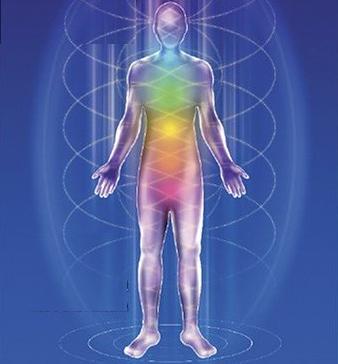 Many people often assume that energy healing and massage therapy are one and the same. However, there is a difference between the two. Energy healing believes that the human energy field extends beyond the body and skin. Energy healing also believes that when the flow of this energy is obstructed or imbalanced, it results in ailments and health problems. So the main aim of energy healing is to restore the balance of the energy field and facilitate healing of the body and mind. It is seen as a natural process of restoring the body, spirit and mind to complete health.
Many people often assume that energy healing and massage therapy are one and the same. However, there is a difference between the two. Energy healing believes that the human energy field extends beyond the body and skin. Energy healing also believes that when the flow of this energy is obstructed or imbalanced, it results in ailments and health problems. So the main aim of energy healing is to restore the balance of the energy field and facilitate healing of the body and mind. It is seen as a natural process of restoring the body, spirit and mind to complete health.
During an energy healing-session, you may not see anything happening unlike massage therapy where you can see the massage therapist actively massaging the body. However, in the energy healing session there are things happening and different people will experience varying effects. Usually, you will experience deep relaxation and it may cause you to fall asleep. The feeling is soothing and warm. You could feel a mild tingling or throbbing sensation, or even feel as though you are floating.
How-Does-Energy-Healing-Work
There are different types of energy healing, but they have the same aim – restore the energy field and balance of the body using ancient techniques. These modalities do not diagnose a problem, but believe in balancing the energy of the human body. The theory is that when the energy is in balance, it will automatically eliminate diseases and health issues.
Reiki is perhaps the most well-known energy healing technique. It helps to transfer the energy, known as Qi, into the person’s body to promote healing. There are fixed hand placements, but many times practitioners may use intuition to help them remove the energy blocks. Here the focus is attaining balance between the seven Chakras which can be done by touching the person or keeping the hands a few inches over the body. Breathing techniques are also used to facilitate healing.
Then there is Polarity Therapy that looks to fix blocked or unbalance energy which can occur due to stress or any other life situation. In this therapy, practitioners believe that the health is an indication of the energy field and there are three types of energy fields running through the human body. By removing blocks or restoring balance, it can assist the person to be mentally, emotionally and physically well. Polarity Therapy uses a combination of energy-based healing, exercise, diet and self-awareness to facilitate healing.
Another type of energetic modality is Qigong. Qigong is used to balance and cultivate Qi to promote wellbeing and health. It uses breathing exercises, movement exercises, meditation and self-awareness to facilitate healing and overall physical and emotional health. The goal of Qigong is to master the mind via being aware of the body, emotions and mind. It works towards the removal of negative emotions and thoughts.






